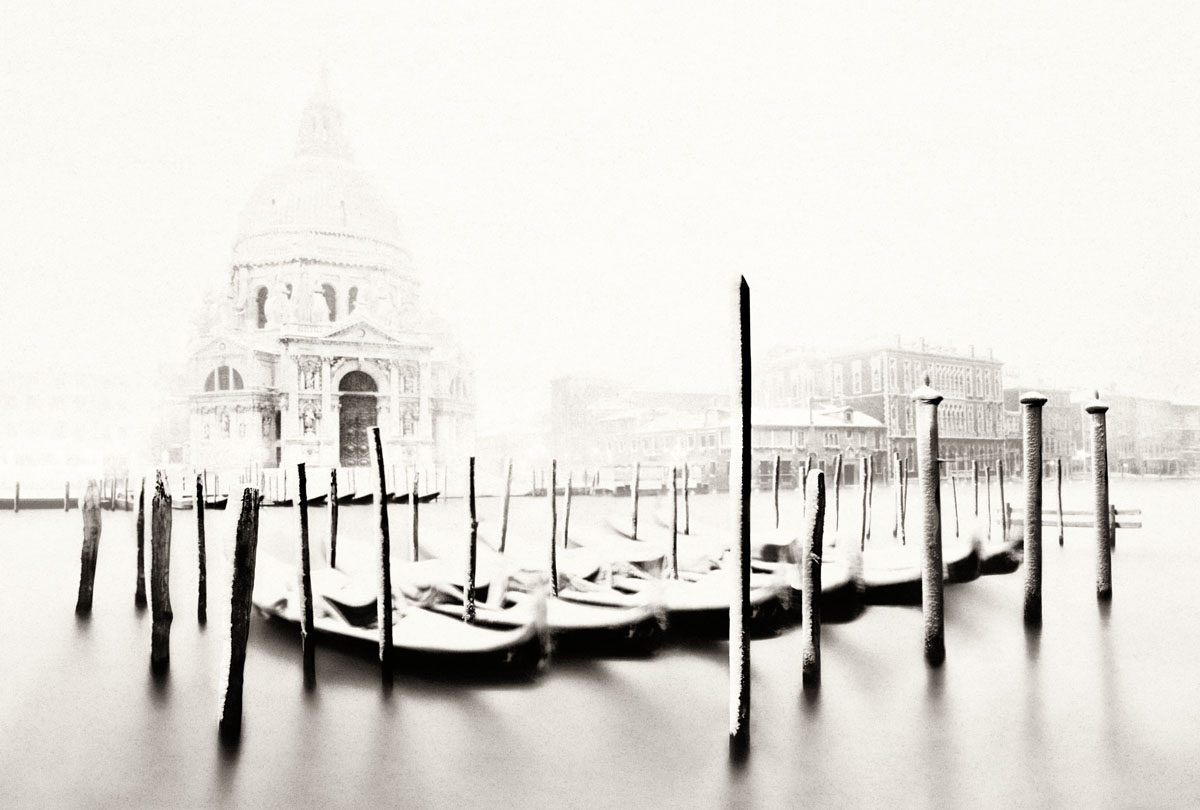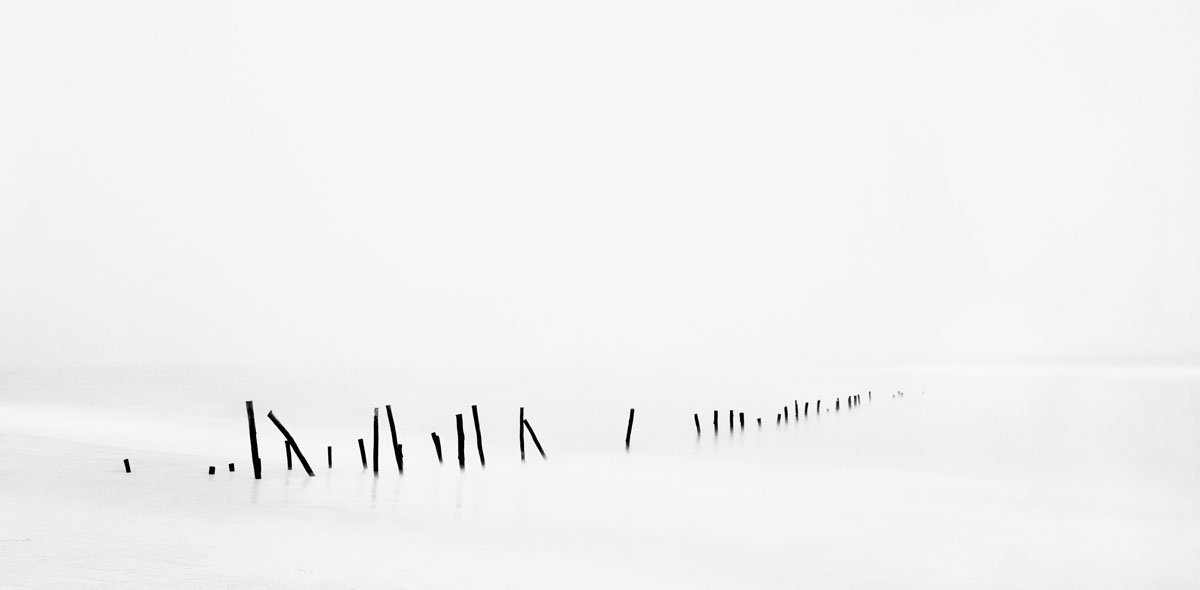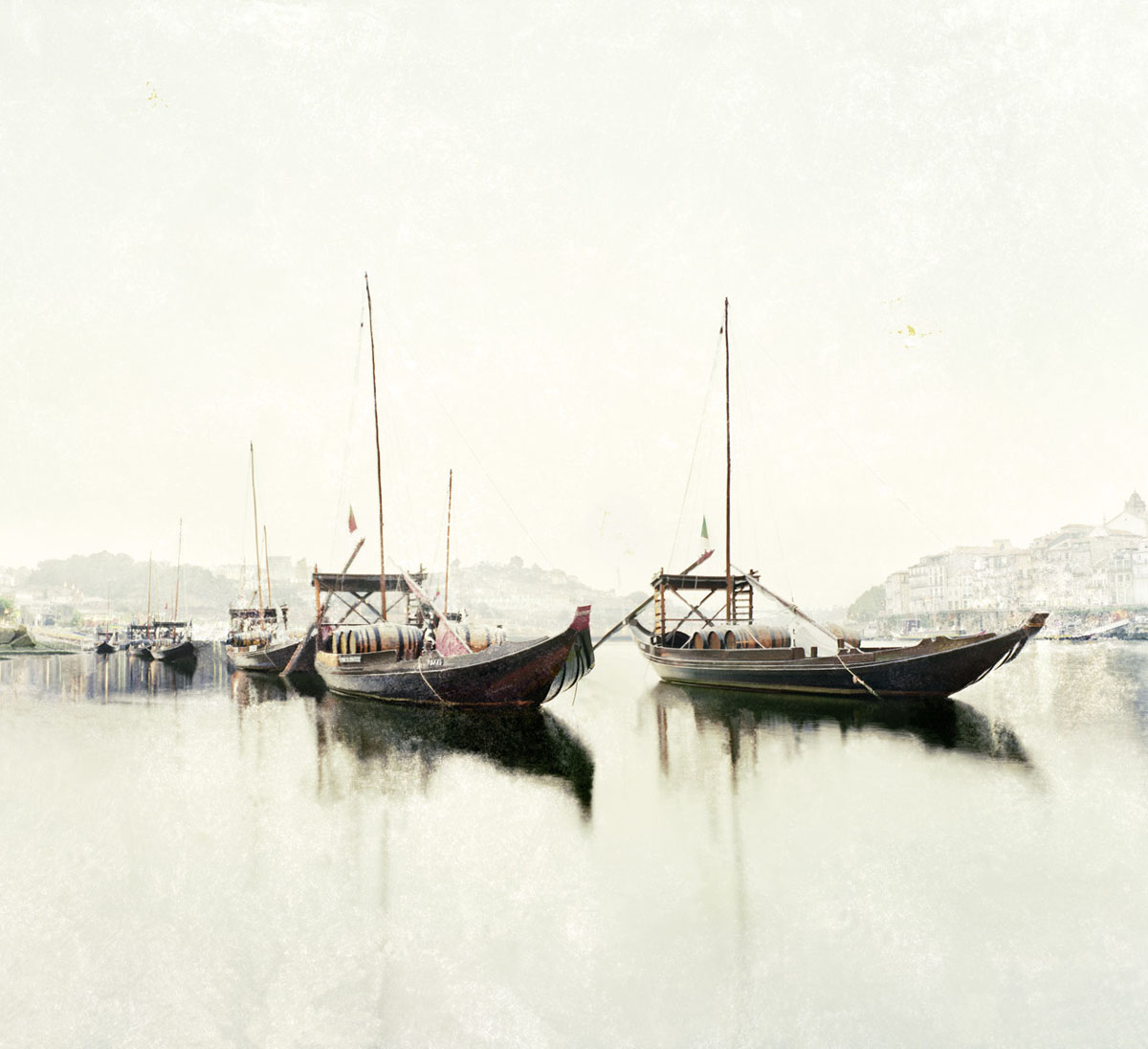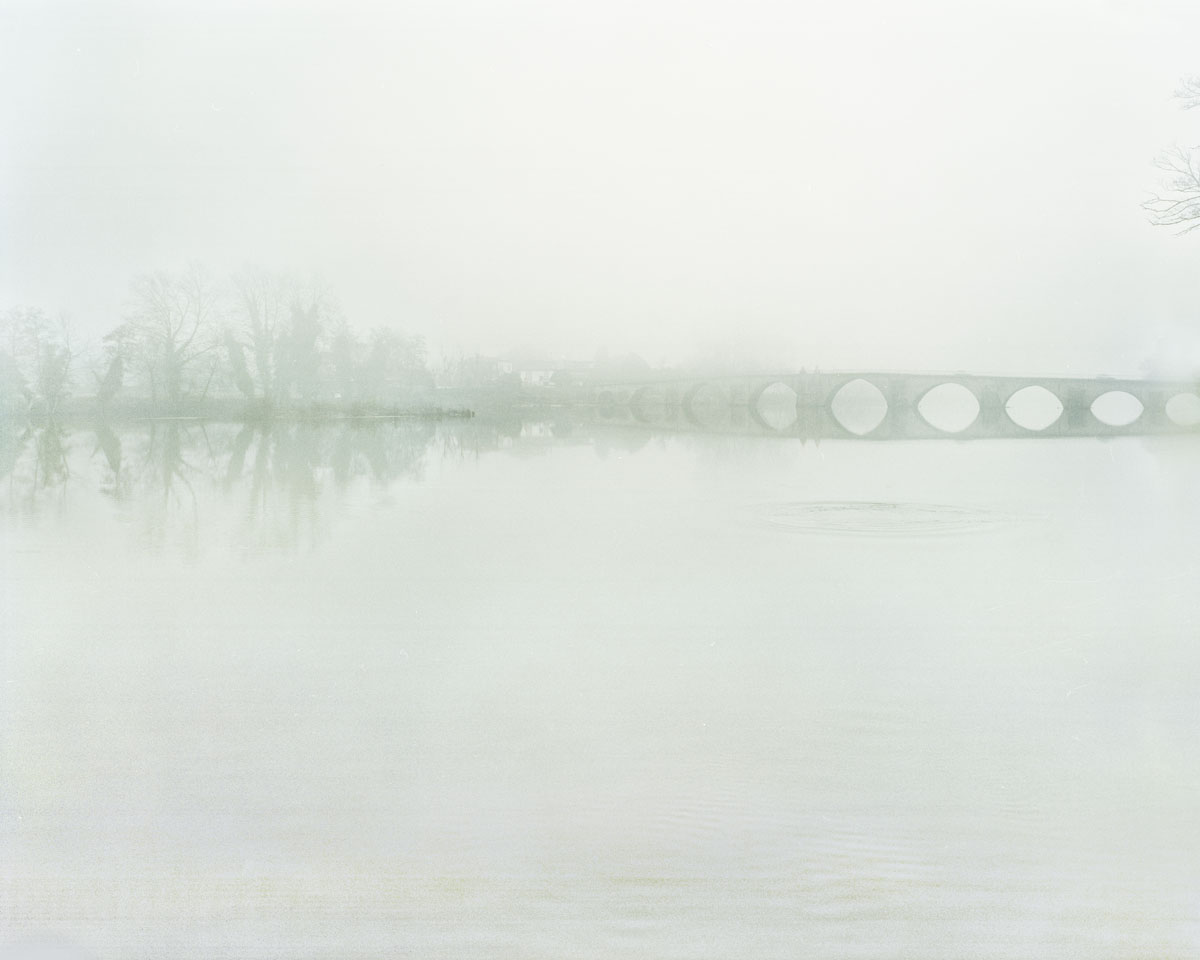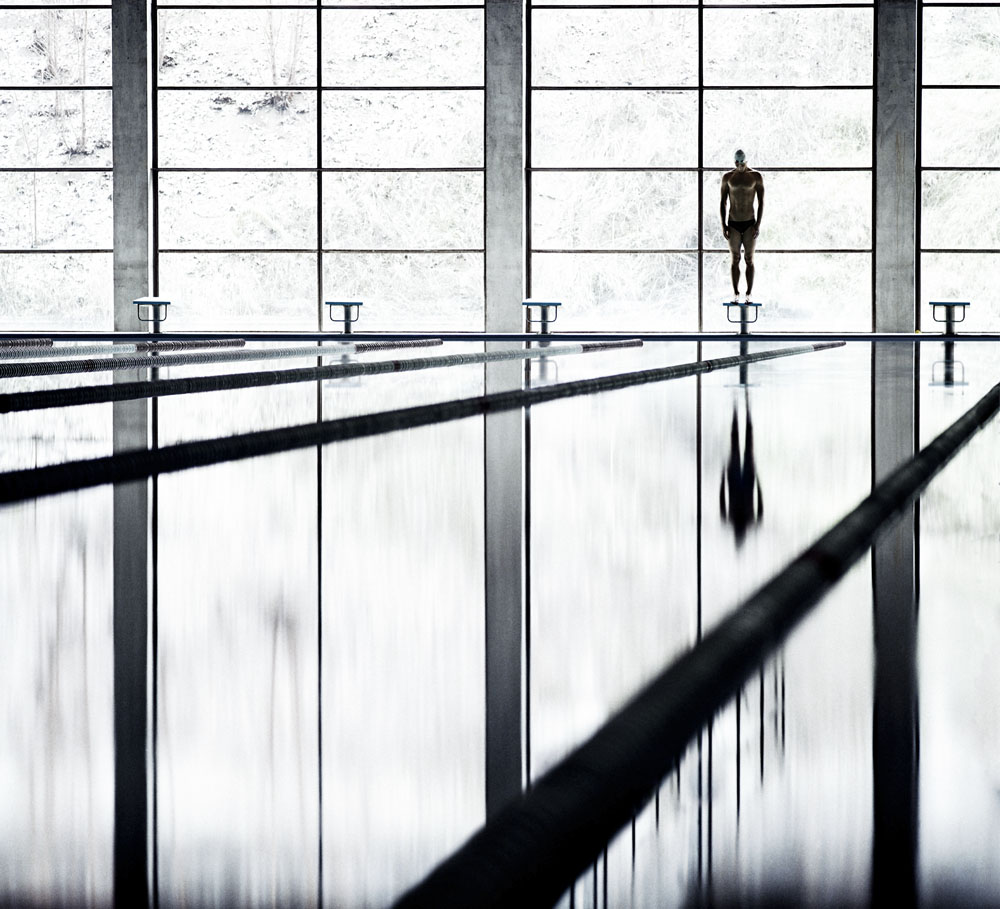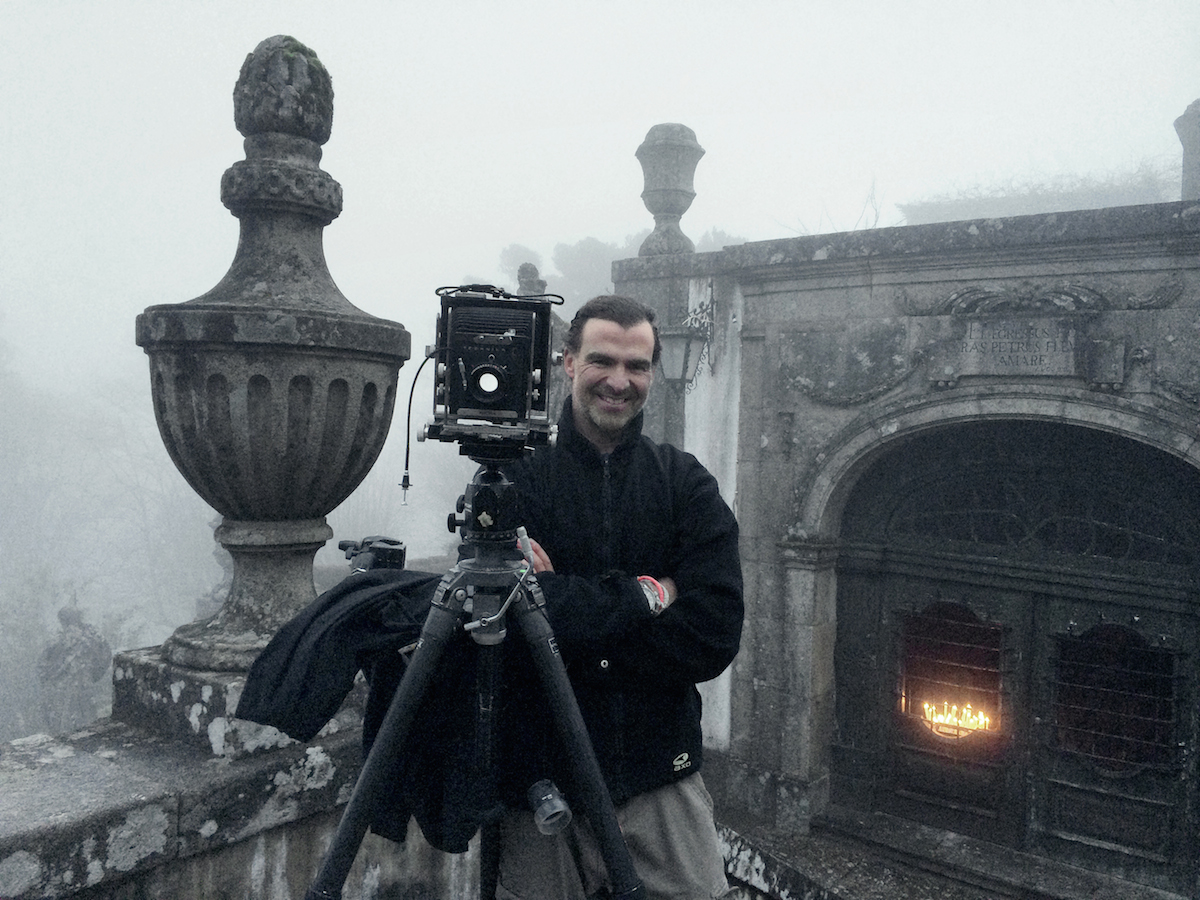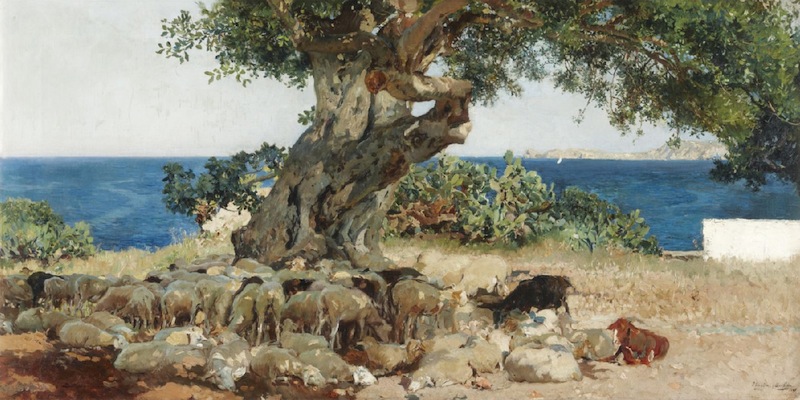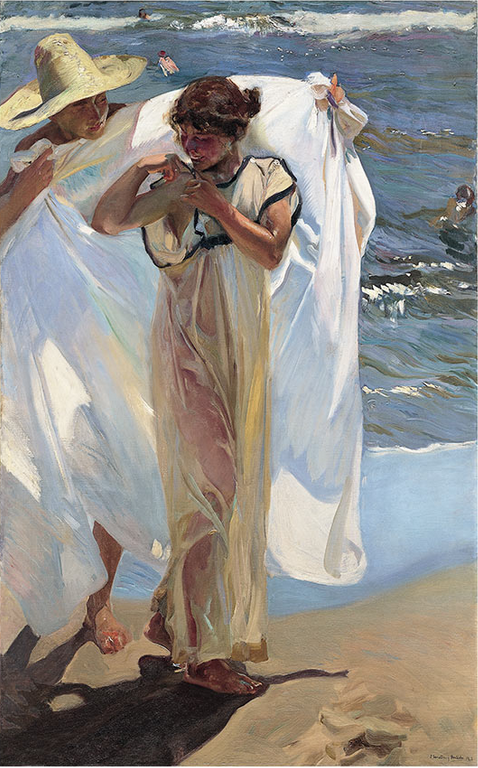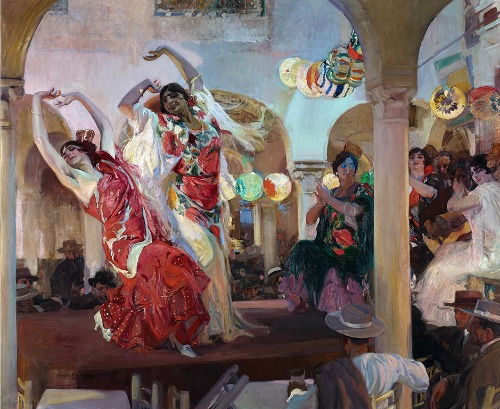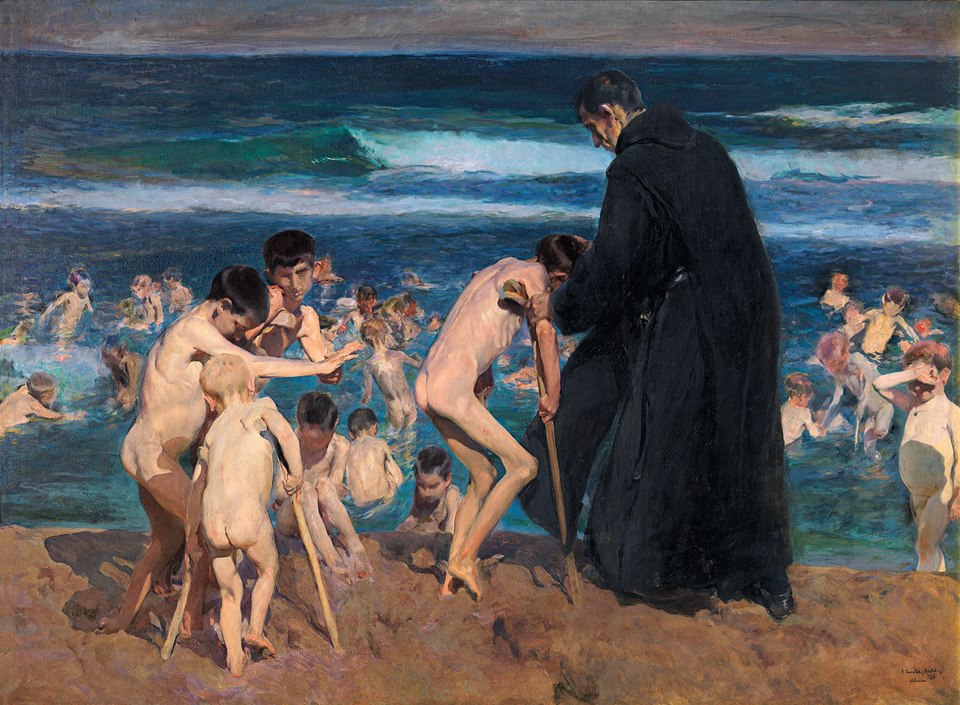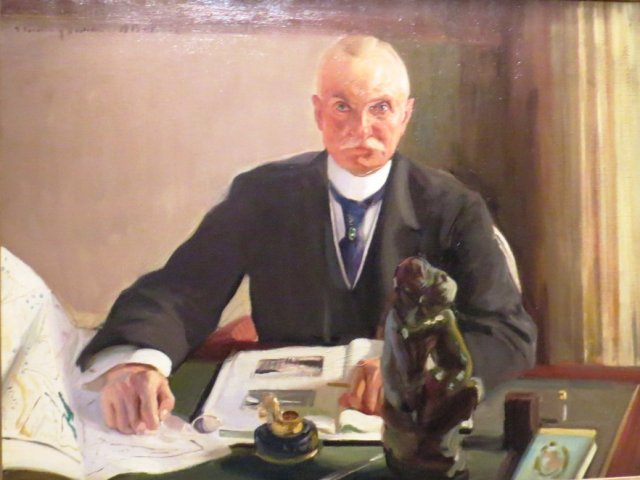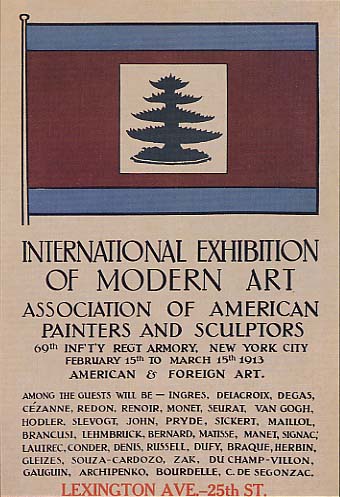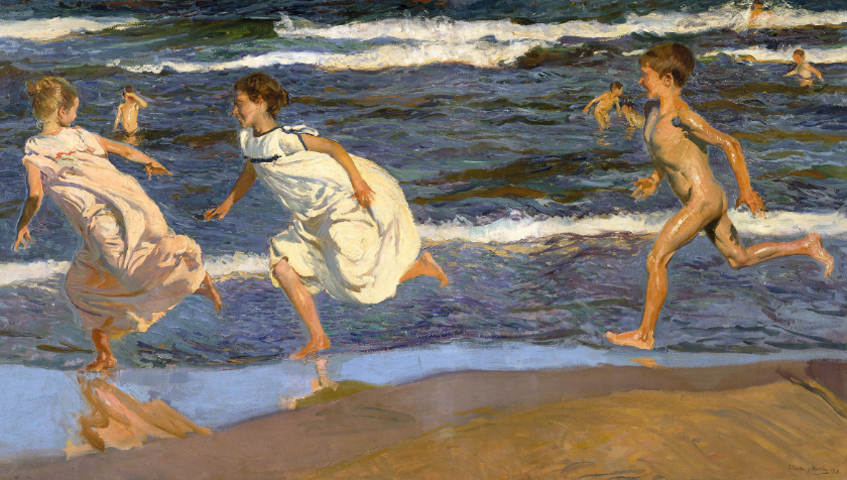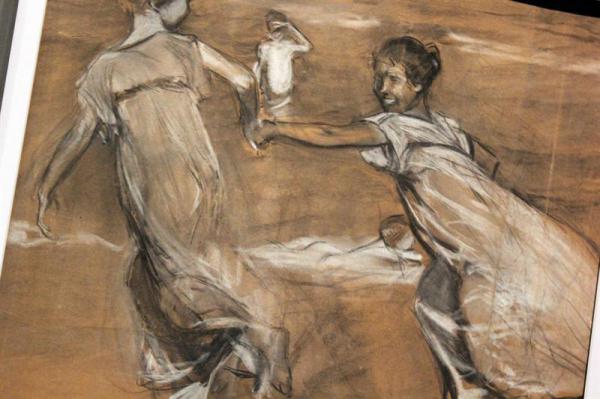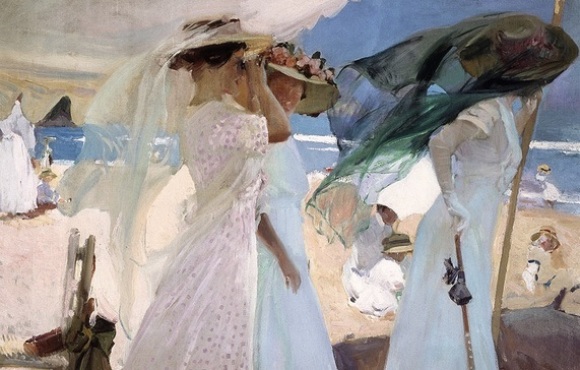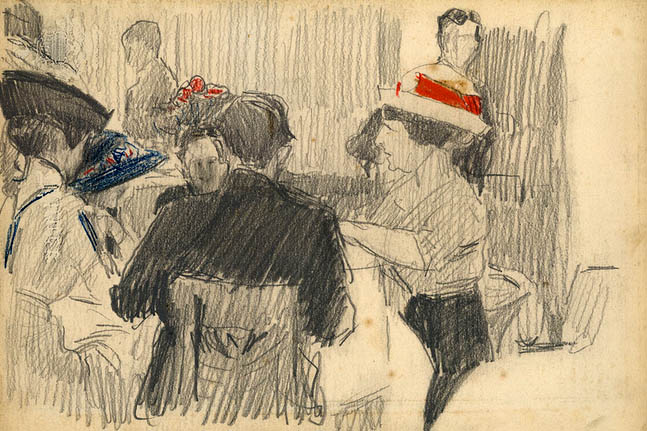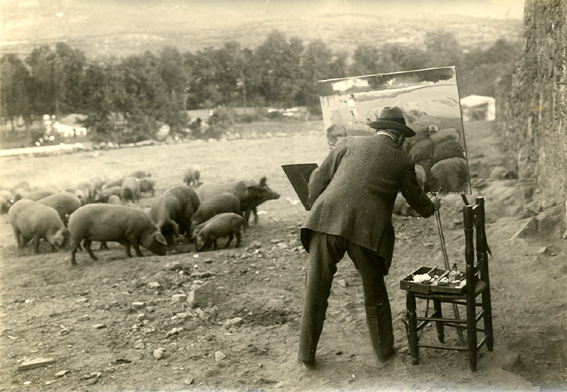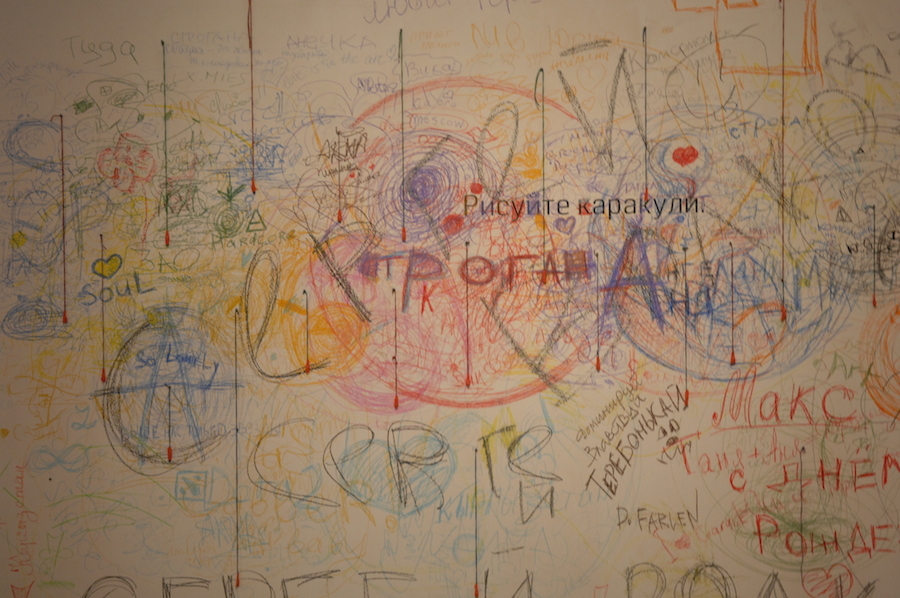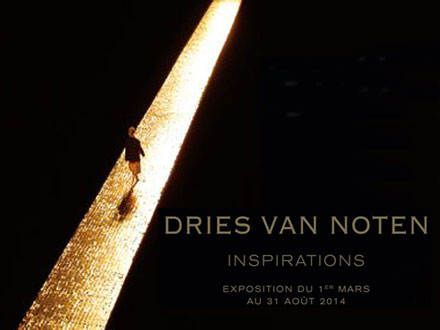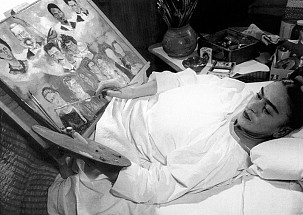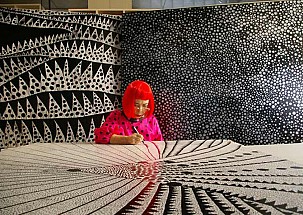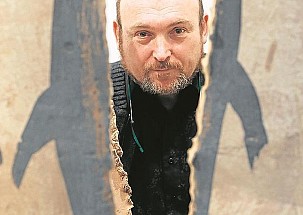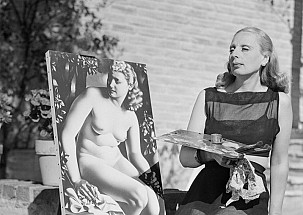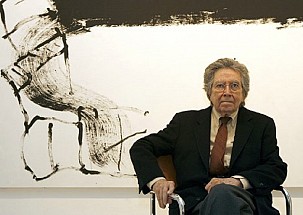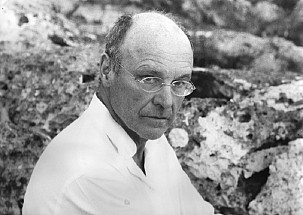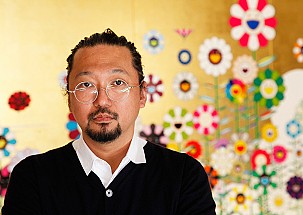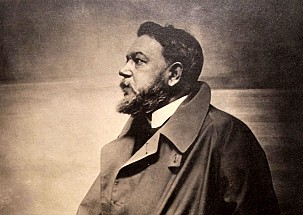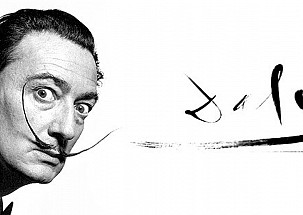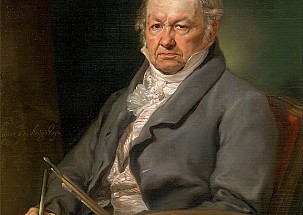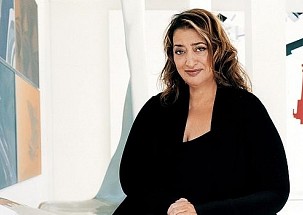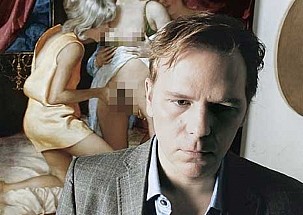- Details
- Written by Elena Cué
Author: Elena Cué
Air, fog, mist... An Apollonian veil that covers everything with an Olympic brightness. Within white itself is the search for peace, purity and spirituality, evoking a world beyond reality. This is encapsulated in the pictures by Fernando Manso.
Fernando Manso (Madrid, 1961) began as a photographer in the advertising world (1990-2007). Thereafter, and until today, he developed autonomous work focusing on the organization of exhibitions and book publishing. Among other works, he has published Madrid for the Editorial Lundwerg, with a personal and previously unpublished insight into the Spanish capital that is now in its fourth edition; or Spain, to discover special landscapes of our country and is prefaced by Antonio López. Precisely this artist referred to his work with romantic overtones: "There are many ways to represent the light, and his photographs remind me of Caspar David Friedrich, as they are touched by this evocative spirit of German Romanticism; his temperance reconciles the tumult of idealism with a beautiful harmony and serenity". His next production, on which he has spent the past few months, is centered in the Gardens of the Alhambra.
The work he now presents, Blanco, reflects the world of this photographer of beauty and sensations. He longs to reach this world through each of the moments that he wants to perpetuate. Traveller and seeker of beauty, two decades ago he began his career through self-teaching, but with an aesthetic sense from a childhood overflowing with art. Water is a constant in his work, in a state of snow, ice, fog ... as the essence of life.
The photograph has the power to capture the reality of a moment that will never be repeated, living and eternal return. Heraclitus said that everything transforms through a continuous process of birth and destruction from which nothing escapes. Manso's images have succeeded in this. His photo's belong to a world where everything is repeated, because it fixes the instant in an eternal present.
The effect of colour on our perceptions and behaviour, or how we are affected by them, is something that Newton, Goethe and Schopenhauer and others tried. The colours awaken different interpretations as our subjectivity or our stimmung. These white images convey loneliness, absence, nostalgia and fantasy. They are poetic scenes belonging to a oniric world.
His photographs tell stories, convey emotions, make you dream, stimulate our imagination. Its author, a tireless observer, stoically waits for the moment he feels the urge to capture the fleeting moment in the vastness of eternity to tell his story, which he feels is their own. His identity is in each one of them. The observer, in turn, enhances the work with their multiple interpretations. That is what art is all about, how the viewer is transformed by it.
Poet of light, of the intense gaze, Manso is a witness and discoverer of beauty, sounds, textures and gestures that make up the "painting" that he will create. He creates his images with a very fine line that separates his photograph from a painting. These white images not only invite you to look at them, but also to think about them. They have a lot of mysticism, pilgrimage to the light of reason and truth. Light and white are linked to beauty, that for which he longs so dearly.
Craftsman of bellows and plates, grain and haze, rust and light, he throws his plethoric images of romance, fantasy and melancholy, as an allegory for the essence of his soul. Enter into his pictures, remain in his space, where the shadow and light fuse. Silence and whiteness, as if the notion of time is lost, we are impregnated with the peace and harmony that is projected. Coming from a serenity that is eternally unchanging.
- Details
- Written by Marina Valcárcel
Sometimes it happens. Some exhibitions like a hit of emotion. As with the deepest experiences of love: irrational. And this time it happens to us. We leave the traffic of Recoletos, climbed the stairs of the old palace of Madrid, headquarters today of the rooms of the Mapfre Foundation: Sorolla and the United States. Room 1. Dark and small inside: El Algarrobo welcomes us, as only he is illuminated. A medium format frame, landscape, far from the monumentality of Sorolla. We remember how to enter directly into the blue sea that reflects the sapphire blue Mediterranean, in the light of noon. Bright blue, with its minimum stroke of a white spatula forming a wind sail, Sorolla's characteristics.
|
Author: Marina Valcárcel
Art Historian
|
 |
"I wish I was not so excited,
because after an hour as today, I now feel undone,
exhausted, I cannot take more pleasure, I can´t resist like before ...
It is that painting, when he feels, is greater than all;
I said wrong: what is natural is beautiful "(Joaquín Sorolla)
Sometimes it happens. Some exhibitions like a hit of emotion. As with the deepest experiences of love: irrational.
And this time it happens to us. We leave the traffic of Recoletos, climbed the stairs of the old palace of Madrid, headquarters today of the rooms of the Mapfre Foundation: Sorolla and the United States.
Room 1. Dark and small inside: El Algarrobo welcomes us, as only he is illuminated. A medium format frame, landscape, far from the monumentality of Sorolla. We remember how to enter directly into the blue sea that reflects the sapphire blue Mediterranean, in the light of noon. Bright blue, with its minimum stroke of a white spatula forming a wind sail, Sorolla's characteristics. It is the sea of Javea in 1898, with its soft pink coast in the background. The protagonist is an old carob tree nearby; the Eastern Mediterranean, with connotations of absence, which leads to the baby-boomers who, in the absence of chocolate, enjoyed sucking their sweetpods as a treat.
In its twisted trunk there are shadows of the Sorolla palette; short brushstrokes and ochre material, grey and black with contrasting blue-green fleshy leaves, with a prickly row of pears left behind, in the sun. And that ends in a white washed wall with a white as hurtful as it is cheerful.
The shadow of carob is home to dozens of sheep and goats. The siesta. Dead spots and holes from the sun. The radiant light of that sea. We almost anticipate a fly buzzing, the rattle of sheep, a mixture of the smell of the sea with a herd and a tree, almost the exact temperature and warmth of this Levantine landscape that transports us with a myriad of sensations.
We approach to read the label of this picture. Under the title and date, provenance: Private collection, USA.
Sorolla: El Algarrobo, 1898.
We turn around to its companion picture: Port of Valencia, this time the Cincinnati Art Museum. Rarely have we seen such audacity in a painter to capture light on a basket or white hat. So much so that the elements, in this case the basket, or wide-brimmed hat, are nothing more than an excuse, a shield emanating light. It would seem that it forms with light. It's a classic scene in Sorolla: the active sea, the harbor, fishing. The boats, with children jumping into the water from them. We immediately think of many other targets: the ones of Zurbarán, more mystical and conventional, in their tablecloth fabrics or chasubles dense thread, also in the thick strokes of Rembrandt as light bulbs that light up the darkness. Even in Velázquez or in some Venetian painters of XVI. They have nothing to do with the message of these targets coming out of the sun, with light, warm air turning to shades that almost introduce scents: the vanilla wafer, summer, the coast, the west, to joy ...
What have these two pictures in common next to the other two -´Another Margarita !!´ and Los pimientos- hanging on the walls of the first room? Sorolla always felt a transnational painter. These four pictures show how before the arrival of the painter to the United States, for his major exhibitions of 1909 and 1911, some of his works already belonged to American collections. Port of Valencia or El Algorrobo were purchased through European dealers who acquired works in exhibitions in Paris, Munich, Berlin and London and are the preamble to what Blanca Pons-Sorolla, curator of the exhibition, comes to announce as the theme of this exhibition.
After the retrospective of Sorolla in the Prado Museum in 2009, it is now the Mapfre Foundation which brings us to the moment of triumph, in the middle of the fullness of his work. Sorolla in the United States. For this to be together, for the first time in Spain, a group of works, many never seen here, which were exposed by the painter in his American samples and purchased by collectors and museums in the United States.
Sorolla: Saliendo del baño, 1908.
Joaquín Sorolla was born in 1863 and died in 1923, 60 years and five months old. We must understand what the political and cultural context in which the painter´s life goes through to assess precisely the merit of his American triumph.
Sorolla's life covers the period of the Restoration and the parliamentary monarchy of Alfonso XIII. It is a stage of political stability in Spain, so it is also in the economic field. However, a deep rift divides the country: political Spain on one side and the royal Spain on the other. The field remains stuck in stagnation, while an oligarchic bourgeoisie consolidates. Both are faithfully portrayed by Sorolla.
Furthermore, the settlement of overseas empire occurs in 1898. The country is almost reduced to its present limits. This has a direct impact on the intellectual movement that leads to a controversy which arises both in the field of literature as in painting and other visual arts. That fracture divided Spain in what came to be called the black Spain (term coined by the book by Emile Verhaeren and Darío de Regoyos, 1899) faithful to a nation at the crossroads, anchored in its medieval and dark roots. A Spain guided by artists like Ignacio Zuloaga to Julio Romero de Torres, also by the great authors of 98, Unamuno, Valle-Inclán, Baroja ... Faced with this darkened Spain, a white and bright Spain shone, born with the joy of living in the present. Next to this Spain were other painters apart from Sorolla as Hermen Anglada-Camarasa or José Pinazo.
In the field of painting, which is the present one, it is curious to know that this controversy even affected the world of colours. In Sorolla, all of his energy is manifested in the power of the chromatic material, in full thick brushstrokes with thousands of combinations of tones which advanced the joy of life. While Zuloaga y Romero de Torres belonged to the current Unamuno who, in his denial of any substance sensuousness as art, rejected all the elements that confer greater physicality to a picture, by oil painting or colours. For him only grey would fit "because the grey tends to behave like a vampire of the colors, because when mixed with them it is in charge of sucking the blood, the life strength, up until emptying themselves." It is in this context that, for example, imagine our Valencian painter, easel in hand, touring Spain, by painting on giant canvasses, full of strokes and patches of colour, noise and optimism to be hung in a Hispanic Society at farthest from noventayochista pessimism.
Sorolla: Dancing in the Café Novedades of Sevilla, 1914
Nothing more out of this first room we finally start with the enormous Sad Inheritance! (1899). Sent to the Universal Exhibition in Paris with five other paintings, the jury awarded the Grand Prix Sorolla by all, but especially for this work here, within these walls, it seems drowned between a floor and a ceiling too close for her. We think it is the only sea painting of Sorolla where the beach is pure melancholy. It's not the bright and cheerful July or August light, nor the golden September; it is a cold light, like of early June. The sea, even the waves and sand, blue and white, seem to have been mixed far too much on the palette with a huge splash of priest's cassock bitumen color, which also makes his hard profile stand out. The rest, those emaciated young are the only bodies of children that Sorolla painted in the sea whose skin is not covered by this transparent, cheerful and slippery film that is the brightness of salt water and what makes it something like metallic fish reflections.
Sorolla here becomes austere, even in the amount of material used in the stroke: dispenses with all sensuality abuse thick patches of colour limiting to almost scraping with the spatula. Returning to those poor children head down with shaved hair and those who do not paint eyes, to the ephemeral misery in their time of joy. Plunging themselves into a water cooler than ever. In a sea that almost becomes the Atlantic.
Source of picture: Purchased in 1902 by J. Vidalin NewYork.
Sorolla: ¡Triste herencia!, 1899.
SOROLLA AND HISPANIC SOCIETY.
The ground floor of the exhibition is dedicated to the two great patrons of Sorolla in the United States: Archer Milton Huntington and Thomas Fortune Ryan.
Sorolla: Thomas Fortune Ryan, 1913.
Huntington founded the Hispanic Society in 1904 to promote Hispanic studies and bring the American public to the Spanish culture. Not only in relation to painting, but also with literature.
In 1909 he organised the first major exhibition of Sorolla in the United States, in the rooms of the Hispanic Society of New York. It was a resounding success, both in sales and assistants to the exhibition, as well as the support from a glowing review. This first exhibition later travelled to Buffalo and Boston where they were received with similar enthusiasm. Sorolla's second triumph came two years later in 1911 in Chicago and St. Louis.
As a result, Huntington entrusts "the work of his life": fourteen panels to decorate the library of his headquarters in New York. Sorolla took only eight years to make this request: from 1912 to 1919. Shortly after completing the last canvas, and probably due to the superhuman effort he performed, he suffered a stroke and in 1923, three years after, he died.
When in 1926 the paintings were finally hung on the walls for which they were conceived, both in America and in Spain this fact went almost unnoticed, fading between the press and criticism so far from the overwhelming triumph of Sorolla a few years before.
What had changed over the eight years in which Sorolla had covered the Spanish geography even painting it in the wake of the success of the exhibitions of 1909 and 1911?
There are two facts that spun the sensitivity of the American and European companies. First of all, the First World War, but above all, a crucial event in the development of the fine arts: where in New York the Armory Show took place and made its way, blowing all the locks on all the doors, the avant-garde spirit.
Armory Show, English name of artistic exhibitions held in the armory of the 69 Regiment of the National Guard in New York, is the term that refers to the International Exhibition of Modern Art that took place between February 17 and March 15, 1913. This exhibition was a turning point for American art focusing it toward modernity and distancing the hitherto dominant academicism. It brought together some 1,300 pieces that roamed the development of contemporary art with representative works of Impressionism, Symbolism, Post-Impressionism, Cubism and Fauvism.
Apart from the density of ideas that characterised this movement, there is one that sums it up well: the forefront is the prioritisation of the discourse on the figure.
The artists who moved around the 1900s, we would say between the last quarter of the nineteenth century until 1914, did so shuffling the dialectic between discourse and figure, looking for a communication between them. But from 1914, speech, meaning, sought independence from the matter that constituted the body: the soul tried to become independent of the body that gave life and consequently the fine arts wanted to separate from the material that it conformed. The basic idea of departing was replaced by the will of transcendence: of intangible meaning.
The center of this edgy hurricane was Marcel Duchamp and his obsession with getting away from plastic sensory.
In short, the ideas were interesting; painting now looked at the service of the mind and the antisense speech that led to the vanguard collided head-on with the painting of Sorolla, essentially sensory and sensual. Sorolla was obsolete.
It was not until the XXI century where the anti-vanguardismo shows its breadth when the figure and fame of Sorolla are returned to the place they deserve. There are 20 paintings in the collection of the Prado Museum.
VALENCIA BEACH, THE PORT, CHILDREN IN THE SUN, THE LANDSCAPES AND PORTRAITS OF CLOTILDE AND ELENA THAT FLOOD NEW YORK ...
Sorolla: Running on the beach, 1908.
"The air was impregnated by miracle everywhere. People quoted the number of visitors and he continually had in his mouth the words" sun glare. "Never had anything like that happened in New York. The ohhh and ahh´s misted floor tiles, cars jammed the street. Portrait orders poured in. Photographic reproductions were sold in unseen quantities. And through it all, there was our little creator. Sitting quietly, overwhelmed but not cocky, while I would translate the waves of enthusiasm from the press. "
(Letter from Archer Huntington to his mother , Arabella Duval Huntington New York, March 1909).
And yes, with this letter from his mother Huntington we understand part of the revolution that Sorolla created in New York in the beginning of the century, flooding it with the Mediterranean light, of the joy of this mysterious inland sea.
In a sort of time warp we imagine ourselves converted to American viewers, moving for the first time, stunned amongst the paintings of Sorolla.
How would we react seeing ourselves surrounded by scenes of sea and beach - girls with pink dresses and loose buns running hand in hand, jumping on their reflections that turned into torrents of colors and light. Persued by the naked body of a child, in a jump, after a blue and violet sea crossed by horizontal waves which look more like grins, with baby teeth and screams rather than foaming curls? Would we notice, in the winter across the Atlantic, how light brightens the colors to its fullest, irradiating them until they are put into our thick coats closed with buttons and filling them with a feeling of warmth and comfort which the paintings of Sorolla always give? Accompanying this canvas, Running on the beach (1908, bought by E. Huntington, in New York in the exhibition, 1909) a series of preparatory drawings on paper where the spirit of Sorolla already announced the use of charcoal and graphite sculpting the folds of the robes of the girls almost as if they were a korai of classical Greece, defining his arms, organising her hair, off the extensive patches of bright pastel white are those that breathe life into the figures and faces of girls.
Sorolla: Girls running III. Study for Running on the beach, 1908.
"THIS ARTIST OF VALENCIA HAS FOUND HIS TREASURE IN BLUE WATER. BUT THE DOMAIN OF THE SEA HAS NOT BEEN ACHIEVED BY JOAQUÍN SOROLLA IN ONE AFTERNOON. HE IS SAID TO HAVE a BROKEN ARM DUE TO ROWING AND A SUNBURNT FACE"
(Juan Ramón Jiménez)
Much in the style of Sorolla , there is a lot of his personality: vital and passionate, just painting conceived as a vehicle for his feelings and his way of seeing things. The painting was his life and in that sense there was dissociation between life and work, between man and the artist. I felt things directly, away from the depths or paused reflections.
His life is lengthened as a stroke over his painting. He maintained a constant communication with the world that inhabited his paintings: with himself and the things he painted, with himself and the people whom he painted from Clotilde, his wife, to his sons and his models. He painted what he liked, especially the sea and its surroundings. Everything had to be cheerful, cool, loud, flooded with light. He painted everything with strength and vigor. He was a temperamental and emotional man and could not engage in something that did not attract him overwhelmingly. In cases where he should engage in a portrait commissioned corseted, the quality of his work was suffering. He moved away from all that gave him coldness. The sobriety of Castilla would frighten him. When painting Castilla he said: "I painted all day and I'm not happy with the work (...) I do not know what happened here (...) but it attracts severity (...) I am less encouraged to continue in Avila, the Castilian bothers me, it is too barbaric. "
And yet he was excited with Andalusia, with the partying and the bulls ...
Analyzing this position –vitality against intellectuality- we discover how art moved and fascinated him. And so we see how Sorolla never showed any interest in taverns; he stayed away from any art analysis as cubist art was, that developed alongside him. Between 1907 and 1914, Braque, Picasso and Gris convert still life into one of their favourite genres: they planned to reduce nature to simple geometric shapes. Nothing too far off from the paintings of Sorolla.
Sorolla: Under the awning,1910.
The fundamental characteristic of his work is the search for the natural. It is true that in his paintings one can see traces of Naturalism, Impressionism, even Fauvism, but always in his way.
He shared many traits with Impressionism: the plenairismo, a clear palette, the tendency to sketch, the weakening of the issue in favor of the environment ... However, unlike his Impressionist colleagues, he did not come close to science in search of the decomposition of light and colour properties. That intellectual search Sorolla disliked and was devoted entirely to the pure emotion and what he saw as natural. "What for? If the normal eye sees colour together why, then separate it?".
"I AM HUNGRY TO PAINT(...) I SWALLOW, I OVERFLOW, IT IS CRAZINESS"
(Sorolla)
This exhibition also shows an overwhelming quality of Sorolla: the indefatigable worker, lucky beast unable to stop.
They are great rooms, also dark, small, crowded, certainly turned into Studioli or jewellery cabinets, in which the viewer enjoys the notes made by Sorolla, either on their small oil boards with landscapes and sketches, along with his drawings from the US hotels or the back of menus of Parisian restaurants.
Sorolla: Coffee Scene, 1911.
"When do I paint? Always. I'm painting now, I look at it as I talk to you".
Sorolla made more than two thousand small paintings throughout his life. They did not exceed 20 or 30 centimetres. The so-called "notes" or "color spots ". And he painted them for himself, for pleasure, like sketches or essays that conveys the artist's soul. They were a scanner of how the painter looked or felt. His most intimate and free side.
They were the immediacy of the look: one that looks and paints at the same time. Hunger of the painter for letting his hand, like a writer extends its pulsations in an outline of what he is seeing or feeling: out of necessity to vomit what explodes within him.
That uncontrollable lava which Sorolla advanced in his studies of nature, capturing snapshots, light changes, no matter if it were a piece of a wall and his limed white, the reflection of a tree in the water of a pond, the arms of children reduced to tiny strokes, alternating with touches of the spatula, to capture their jumps in the waves ... This custom of the notes, to paint for himself and the small format was already known from Goya and developed by painters who took their paints outdoors, whether it be Fortuny or Pinazo, Sargent or Boudin. It seemed that Fortuny had invented an ingenious box of notes that facilitated the convenience of outdoor studies. It was a box with two parts connected by hinges: the bottom to act as a palette and where colour tubes and brushes were kept; at the top, was the small board in a manner that when standing, could receive the painter´s creation.
These notes become especially interesting in the end, when freedom and the security itself is already full. They become evidence of the advancement of the technique and the search for light, while the shadows are forced to the limit and painting sharpens its modernity to remind us that Sorolla works at the time of the photography and passion for Japanese stamps.
"Now is when my hand listens completely to my retina and my feeling. Twenty years later!" said the painter at the end of his life.
{youtube}okIP00Hoc3E|600|450{/youtube}
- Details
- Written by Marina Valcárcel
|
Author: Marina Valcárcel.
Art Historian
|
 |
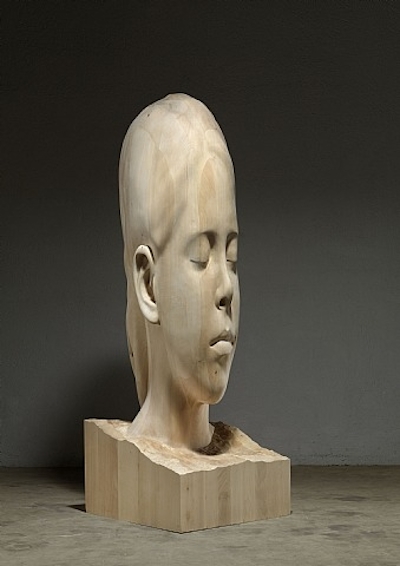
Paula, with her closed eyes, her low undone plait and her trunk-sized proportions, could only have come from a lime tree… She seems timeless and without origin: she might come from the Mediterranean, or perhaps she’s the sister of one of the figures constructed by the Polinesian tribe.
At the 33rd edition of the ARCO fair, this sculpture by 59-year-old Barcelona artist Jaume Plensa has powerfully stood out from the rest of the works on display. The art event has found itself this year in the middle of a war of numbers: according to the latest report published by Artprice, art sales in Spain have dropped by over 60%, leading to the Government’s decision to bring forward the planned decrease in art-related VAT just ahead of the ARCO fair, giving it some much-needed breathing space.
In the midst of all this controversy is Paula, seemingly asleep and somewhat alone and distant in her Lelong Gallery stand. She seemed to attract peace, introspection, spirituality and above all authenticity in a sea of noise, business, fluctuations, cameras and, dare I say it, a certain emptiness.
Paula is one of Plensa’s representations of girls based on real models. She is nine years old and her eyes, fully closed, are a symbol of the inner energy that she holds within and with which, in a way, she illuminates us. She seems to be thinking both about the past and the future — she is a timeless piece, giving off a feeling of fragility and power and inviting us into her inner world.
Paula’s features are both latino and oriental — ultimately, she is an idealization of human race and beauty, that is to say, a totem. Observing her, one is immediately reminded of the Easter Island statues, which became ancestral representations when eyes of coral or red volcanic rock were added to them.
The human body is the central axis of Plensa’s work, perhaps because the body, particularly the head, is where the brain and the soul reside. “We must not confuse the brain with the cerebral. The brain is the wildest place in our body. Let’s give it freedom to act”, says the artist.
His faces represent a search for spirituality, bringing us straight back to El Greco. “They are like the flame that is born from the earth”, says Plensa, as if it were the famous Renaissance painter speaking.
Paula is a tremendously beautiful, precise and poetic work. The artist’s work is often full of austerity and specificity: “I look for austerity in the message. One must create the purest possible bottle so that it may protect the message on its journey, but without overshadowing the importance of the message itself.”
In his search for austerity, or better still, purity, Plensa works with materials that we associate directly with light, with whiteness, with silence and calm. Alabaster, marble, light-attracting molten iron painted white.
Having said that, Paula is unusual among his works as she is made of wood, a warmer, more organic material. Lime, in fact.
Lime wood has a clear, relaxed colour, a sort of pale yellow, reminding us of this elegant tree with its soothing leaves. We ran our fingers across its knots, the surface of this hundred-year-old lime being extraordinarily smooth and fine. We remembered Plensa’s reflection: “... I am Mediterranean and I have eyes in my fingers. I need to touch things, feel things physically — I have attempted to represent abstract concepts such as light, poetry, sound, the inner world, in a tangible, physical form that you can touch. I enjoy interacting with my own work, which is always directed towards the human being.”
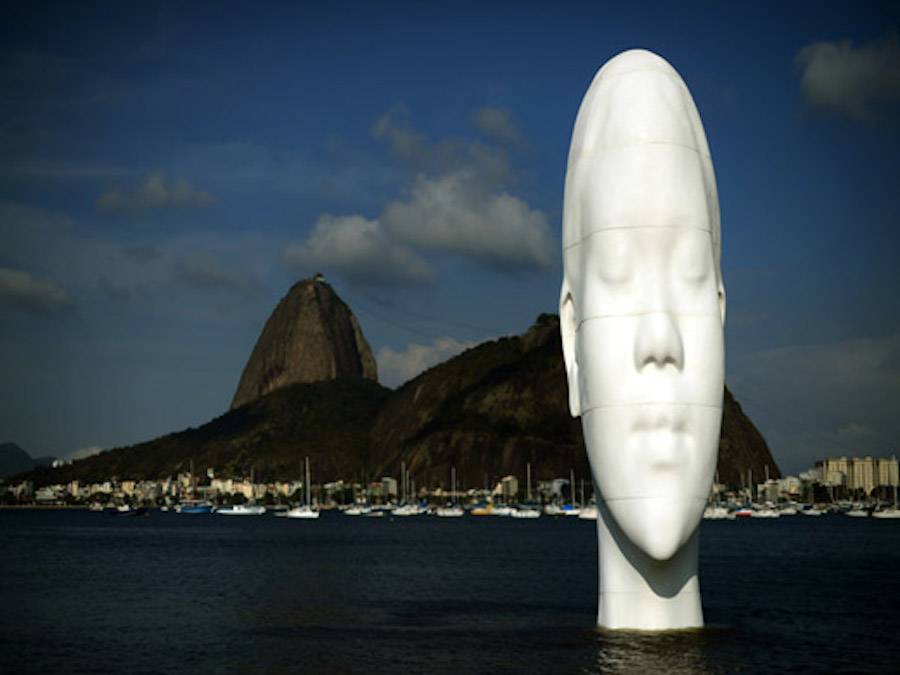
- Details
- Written by Maira Herrero
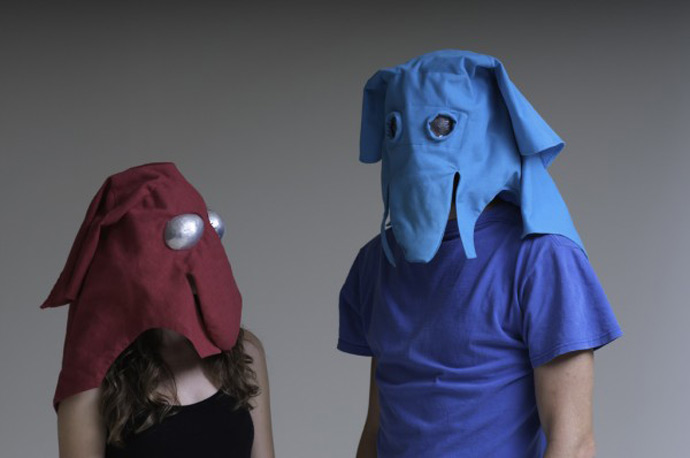
Lygia Clark: The Abandonment of Art, 1940-1988. MoMA. New York.
"It's about challenging the canonical narratives with the inclusion of unexpected objects."
That’s how Luis Enrique Pérez-Oramas, Head of Latin American Art at New York’s MoMA, understands art. And that is precisely how Brazilian artist Lygia Clark expresses her art in her current exhibition at the museum on display until August 24. The exhibition includes a number of different artistic expressions that the artist was involved in throughout her career, and which together have defined her as one of the central figures in 20th century Latin American art.
Lygia Clark spent her initial years working under the geometric abstraction movement, which she subsequently abandoned a few years later to join a group of Brazilian artists united under the Neoconcrete manifiesto (1959), created as a response to the exaggerated rationalism present in the art world just before the Second World War. The group intented to recuperate a sense of aura in art, a return to expression, subjectivity and a renewal of the artistic language, with the main principle being “without emotion, Art is precarious”.
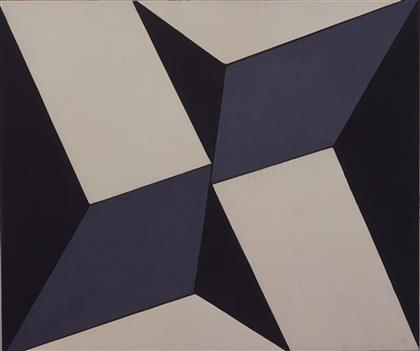
Just a few months after signing the Neo-Concretism manifiesto, Clark began to distance herself from the group and to rethink art in terms of its active relationship with the viewer, which required a redefinition of the perception, exhibition, communication and structure of art. In other words, what was needed was to re-conceptualize what a work of art actually is. Clark’s intention was to revitalize the idea of an autonomous artistic object; paint is no longer simply a tool, a technique, but it transforms into an object.
The exhibition begins with the first works of her career, clearly abstract in form; we gradually see the paint element in her works acquiring more of a shape and body. Paint slowly becomes independent, and forms start to boldly reach out towards the viewer in unexpected ways, as if challenging the perceived separation between the inorganic and organic worlds. We are then greeted by “organic lines”, which appear as cracks in the paint. The artist’s idea is to express the organicity of paint, and to extract it from its conventional —inorganic— framework. Bodies interacting with other bodies.
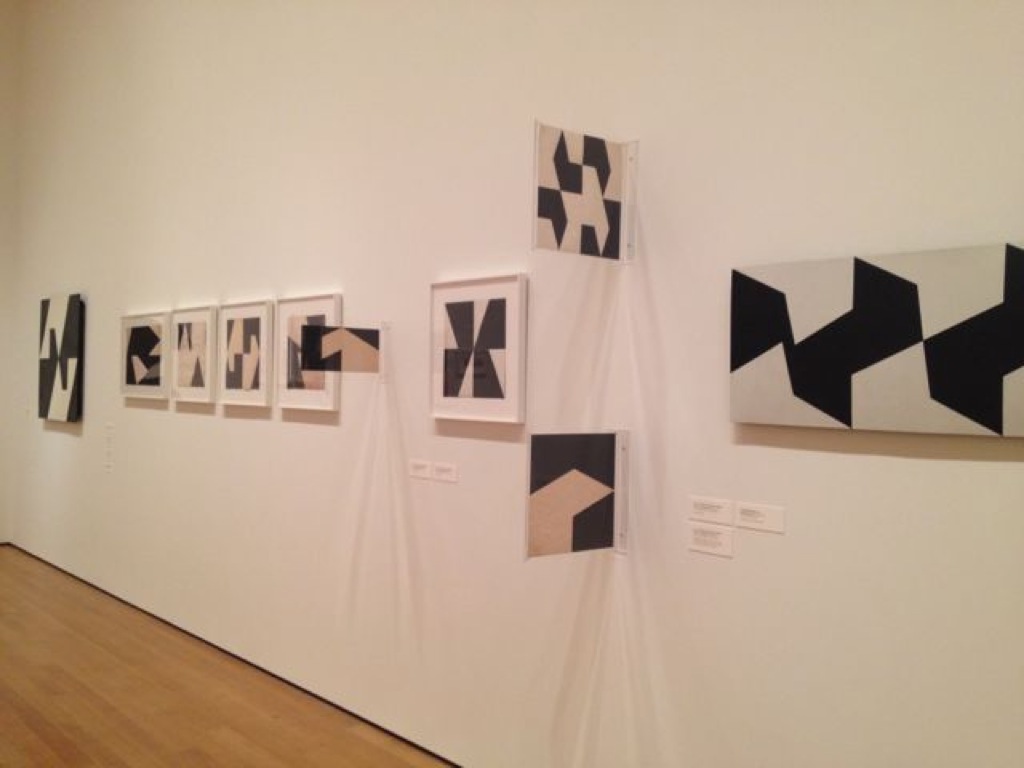
In 1961 she begins work on her so-called Bichos (Bugs): plaques made out of alluminium, stainless steel and smooth metal, all punctuated with hinges. The constructions consist of various layers and they do not form a single unit or mass — they were created as active, living organisms which viewers are encouraged to interact with. The MoMA presents them with no barriers or limitations whatsoever, so that viewers may approach them freely and imagine the multiple possible forms that the work can offer.
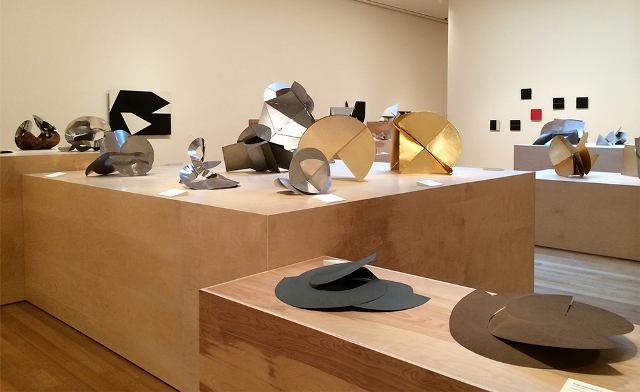
The years 1964 and 1965 represent a critical moment in the creative career of the artist: her work “Caminando” (Walking), one of the most representative of her entire collection, presents new conceptual possibilities. The work is its own action — the work itself is the merging with the viewer. Her interest in form is captured in the Moebius strip and its implications. It symbolizes a strip where there is no discontinuity between the inside and the outside, between interior and exterior. The action of “walking” consists in the viewer cutting a strip of paper in the shape of a Moebius strip until the formation of a very fine line (a residual line), which itself becomes the “rest” of the action, i.e. “the artwork is its own action” — the discovery of that organic line that the artist is so fascinated by. “Caminando” is one of Clark’s most important pieces and this fact has not gone unnoticed by the exhibition’s curators, who have allowed visitors to get up close to the work — although only the most daring among them have taken on the artist’s challenge.
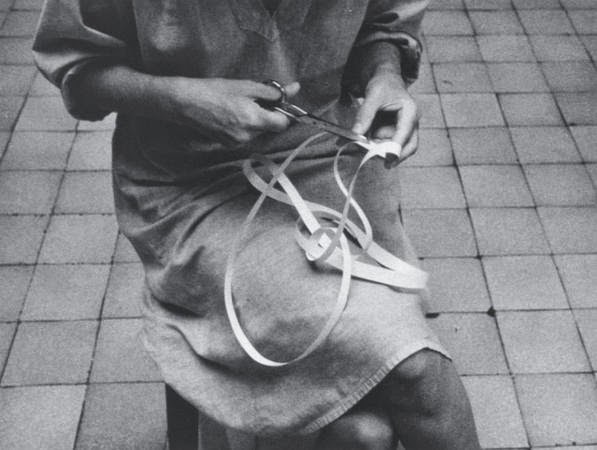
A car accident in 1966 left Lygia with a fractured wrist and effectively one less hand to work with, nonetheless she used the cast that she had to wear to protect the broken bone to create a piece consisting of a transparent plastic bag containing a stone and that she filled with air. This was the first relational object that she described in an essay titled “In order to understand the meaning of our routines”.
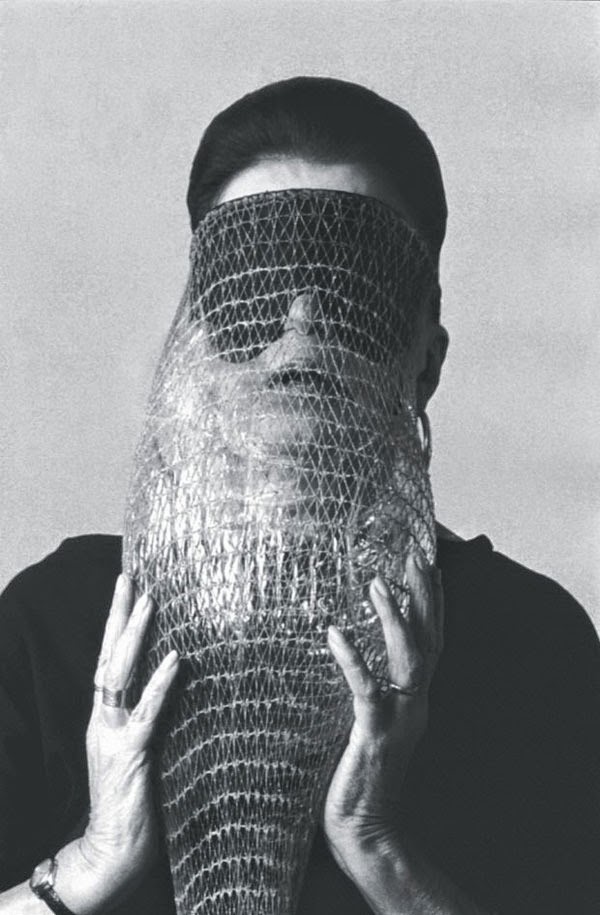
The exhibition includes more than 300 works from museums and private collections from around the world. There is so much to say about this artist that I highly recommend a full immersion into her work and her understanding of art. In 1997 the Fundación Antoni Tàpies hosted an exhibition of her work, and the Fundación Juan March, in 2011, presented some of her work for the exhibition “Geometric Abstraction in Latin America (1934-1973)”.
The exhibition invites us to reflect on the role of the viewer and their transformation from mere passive receiver of a completed work of art to their active intervention, interpreting it, manipulating it and even becoming a physical part of it: a plurality of meanings converging together, with the aim of creating a new way of understanding and relating to art.
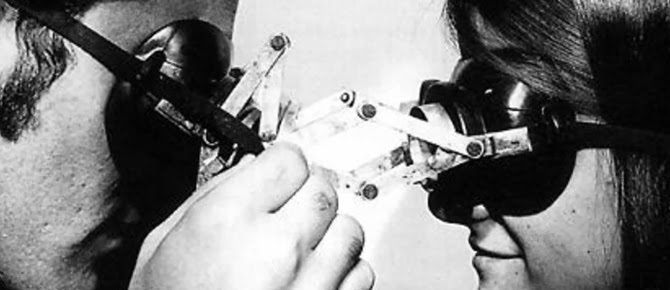
Lygia Clark (Bel Horizonte, 1920 — Río de Janeiro, 1988) studied in Río de Janeiro and Paris, and after spending some time working in abstraction, became a part of the Grupo Frente and was later one of the signees of the Neo-Concretism manifiesto. She began her most creative phase of her career in 1960 when she looked at reinventing the interaction between the work and the viewer. She is currently considered a point of reference in the study of what the limits of art are, and of what the active role of the art viewer should be.
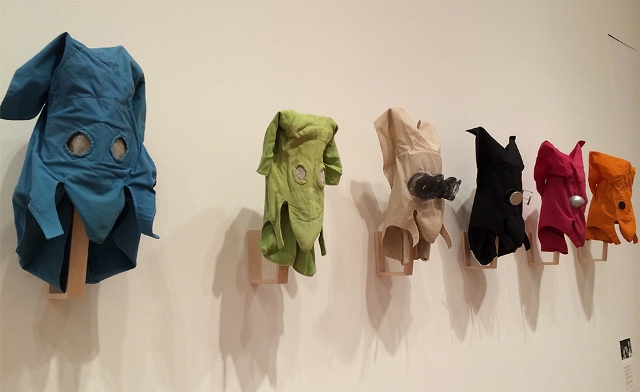
- Details
- Written by Alejandra de Argos

The Garage Center for Contemporary Culture is a non-profit organization opened in 2008 by collector Dasha Zhukova in what was once a bus station.
On May 1st this year, the center changed its name to The Garage Museum of Contemporary Art and relocated to Gorky Park, with the aim of becoming an international point of reference in contemporary art. “Do It Moscow” is the center’s first exhibition since the move.
In this exhibition, the museum becomes an interactive space: a total of 80 artists from all over the world have provided the initial concept for their work together with instructions for use, and hundreds of local visitors have come to the center to see the exhibition and “follow” the instructions. Visitors thus play an active role in the exhibition, as participants as well as spectators, and the center’s staff is on hand to explain how each installation works and what the instructions are. There were many groups of art students visiting the exhibition when I was there, and the experience as a whole was enjoyable and enriching for its singularity.
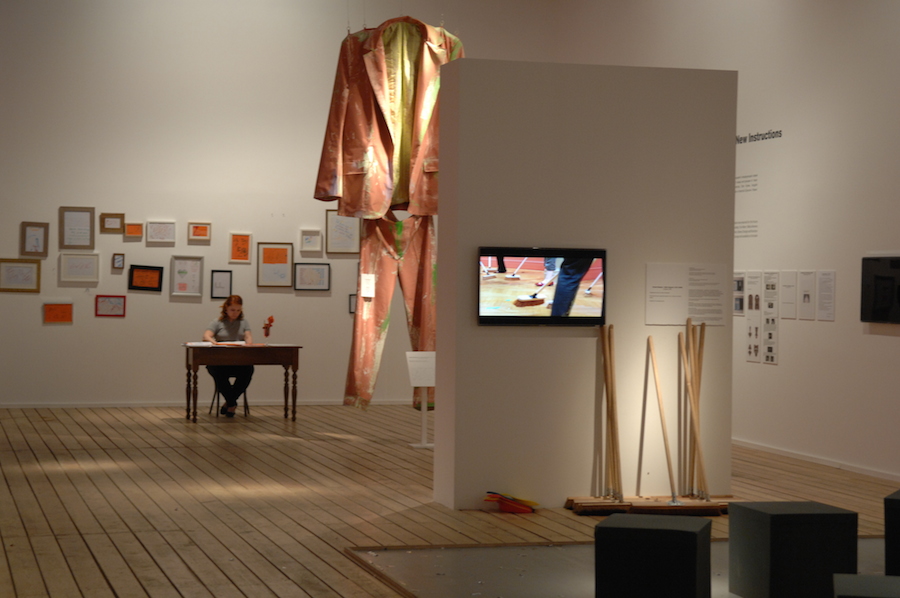
The initiative, which began in January 2014, sees various centers and museums, as well as local students and artists, taking part. Thousands of visitors also help bring the initiative alive through their many interpretations of the individual art works.
The first installation one is greeted with is a messy bedroom where t-shirts, pillows, underwear and boots are all strewn across the floor, as if something dramatic had just happened. The artist John Chamberlain dictated the instructions and Lawrence Weiner interpreted them. The role of the spectator was to change the course of the events being represented by physically changing the composition.
Another installation consisted of colourful knitted structures, reflecting architect Sejima Kazuyo’s idea of building architecture for dogs. In the meantime, a Moscow Art Lyceum student was taking photos of the installation according to instructions by Christian Boltanski. The supervisor of this specific installation also played a part, insisting that the dogs wear muzzles for safety reasons.
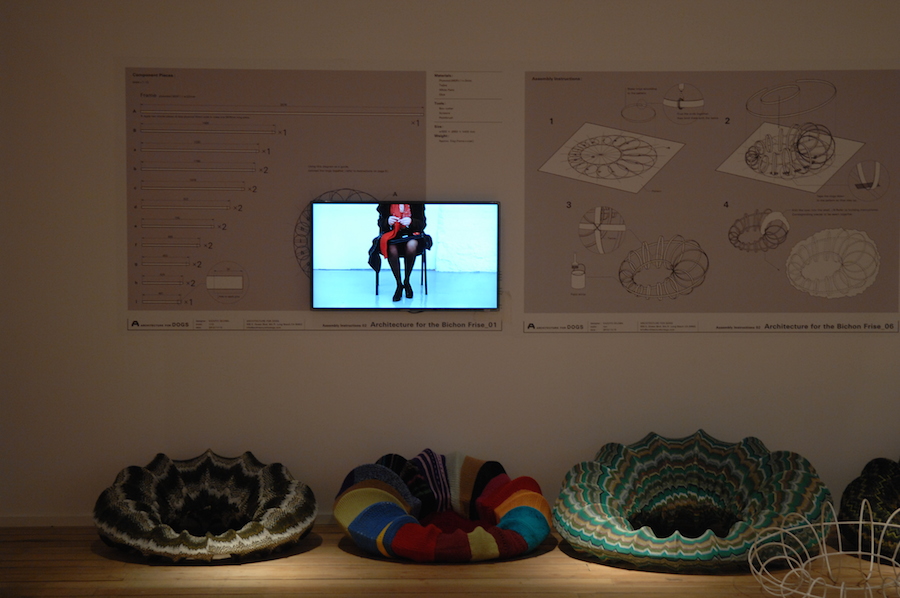
Chinese artist Cao Fei had set up a soapbox where participants could stand up and take on the role of newly appointed presidents of their nation — they were thus invited to give a 20-minute presidential speech and have it recorded in the process.
Erwin Wurms’ offering was an invitation to the public to insert their legs through the sleeves of a sweater and to assume a statue position for 20 seconds.
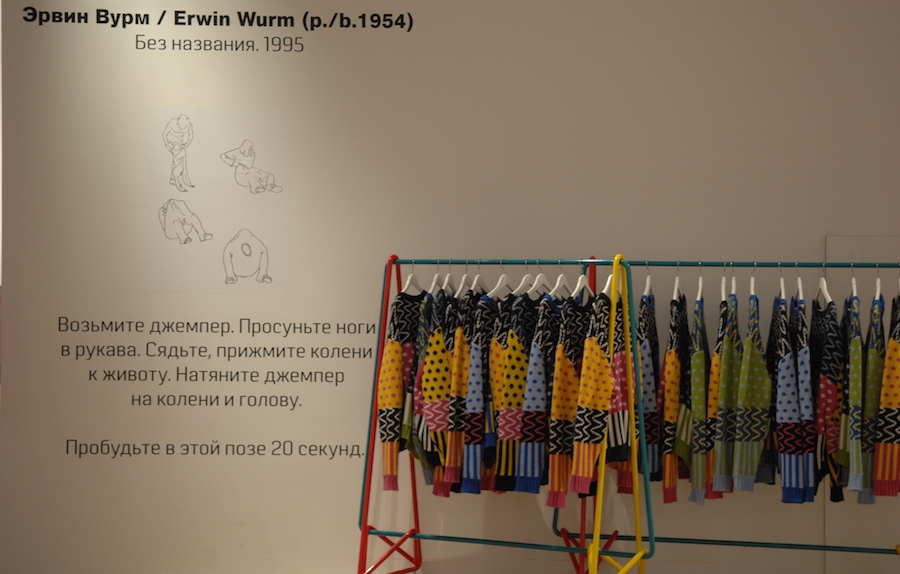
Another surprising piece was by controversial Guatemalan artist Aníbal López, who had placed a sign which read “For Rent” next to a series of his own paintings, the idea being that for $20 visitors could rent one of his paintings for a day, with the revenue going towards the production of future works by other artists.
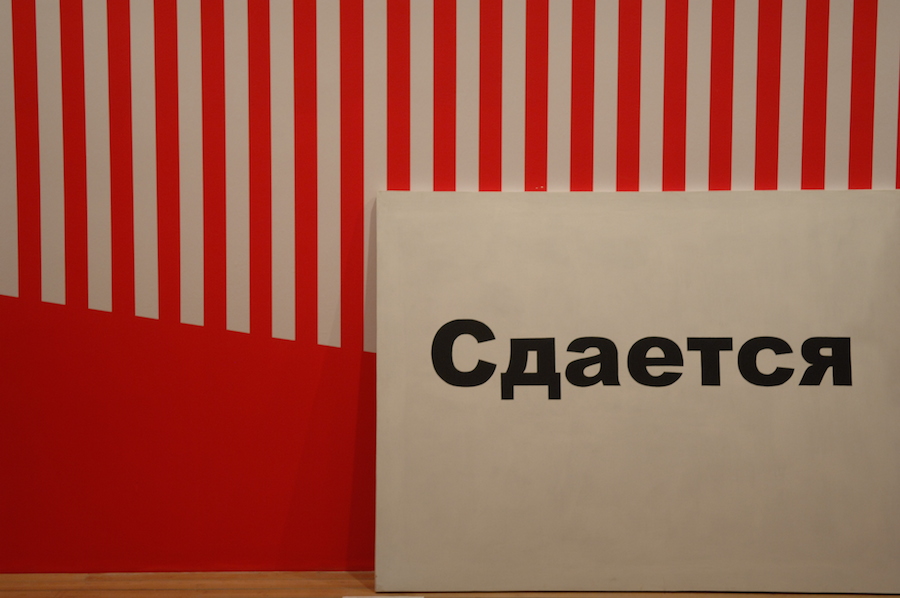
There was great variety to be seen among the installations: a standalone wall by Carlos Cruz Diez, a corner with a mountain of sweets by Félix Gónzalez-Torres, shelves painted by children with the covers of books they’d like to read, paintings by art students from Moscow’s British School of Design, scribbles… The initial idea for the exhibition came from Greek-born artist and architect Andreas Angelidakis, who has shown a real commitment to involving the audience directly in the art installation, which will in fact be destroyed when this temporary exhibition comes to a close.
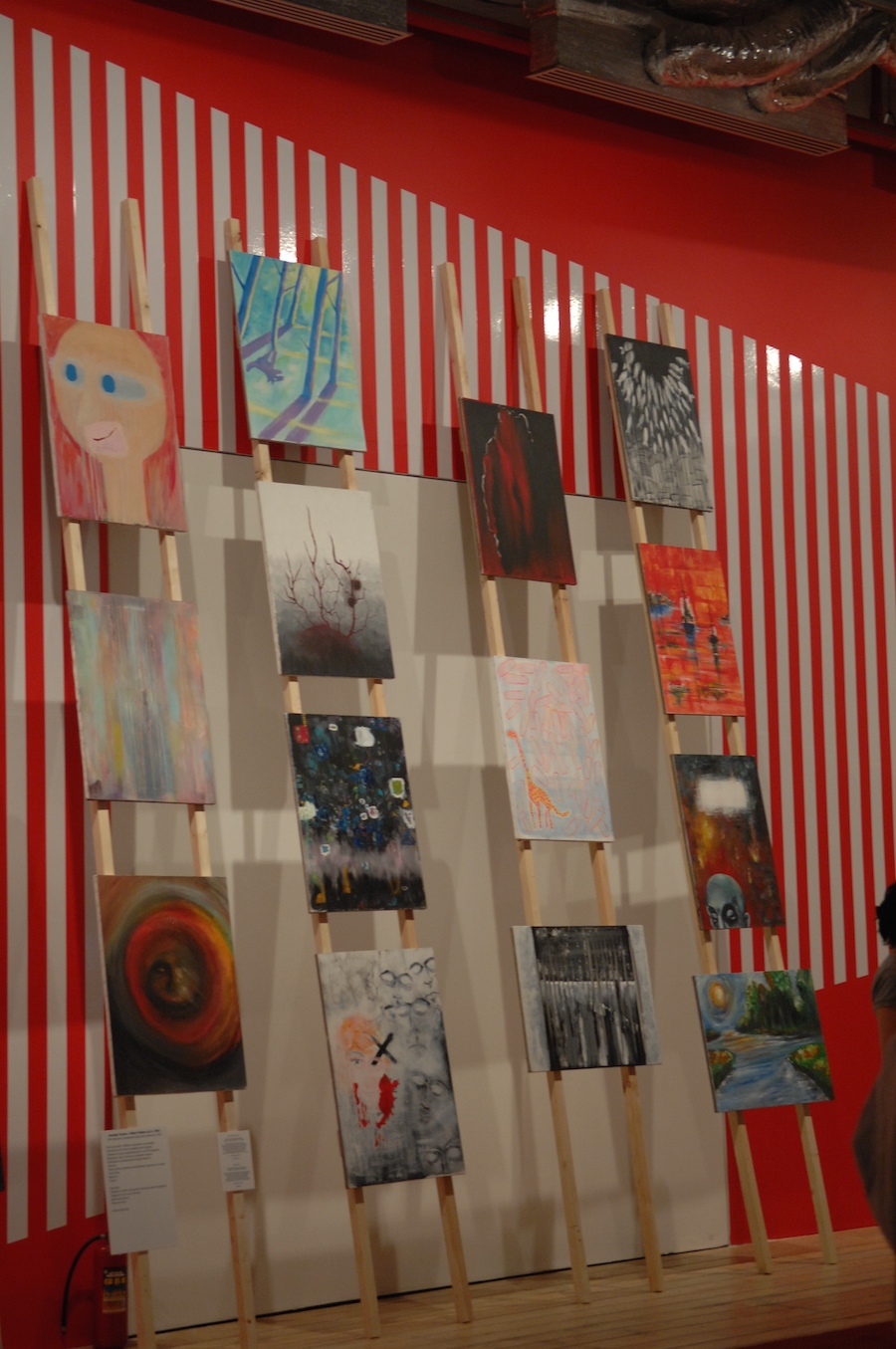
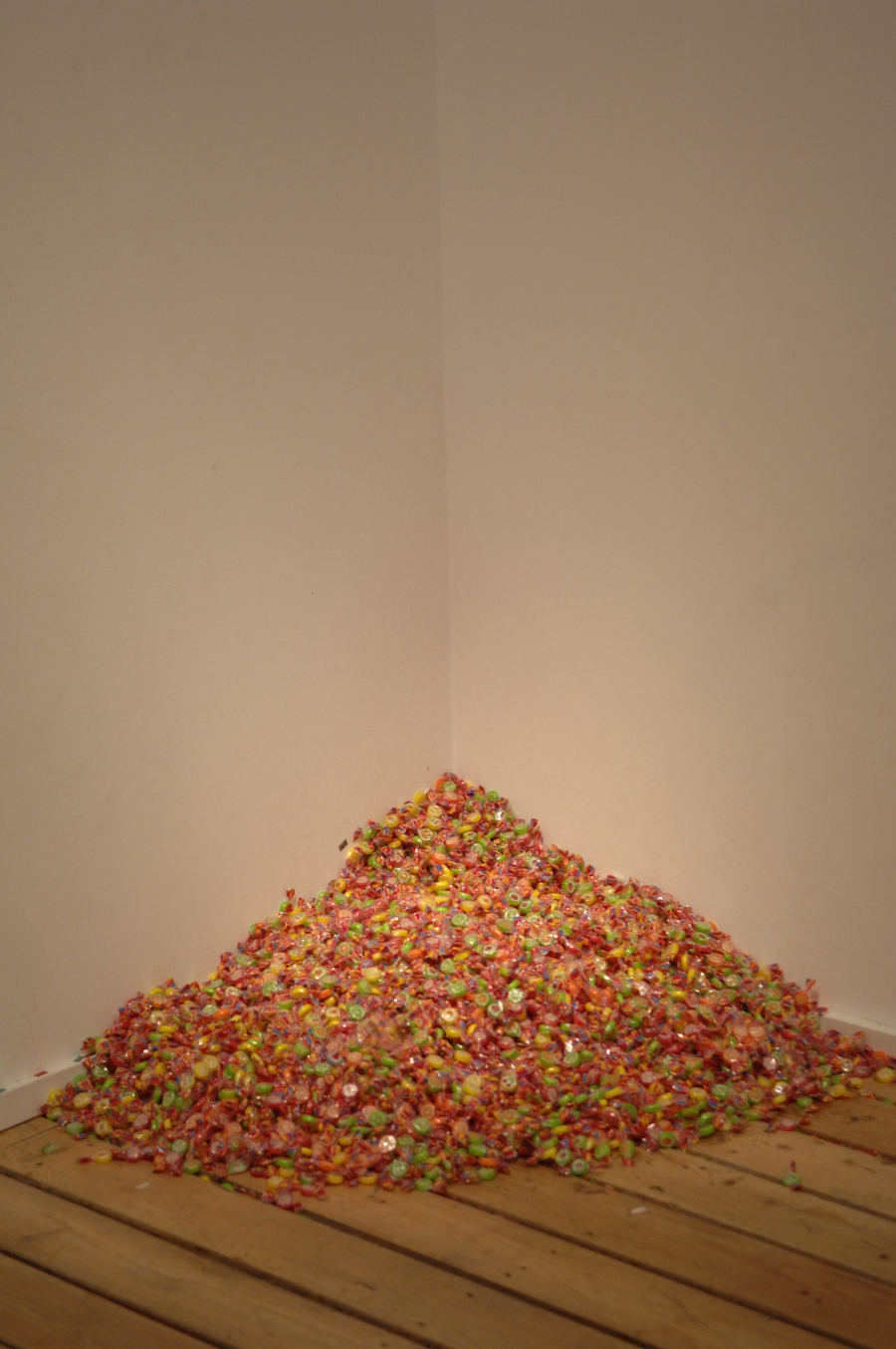
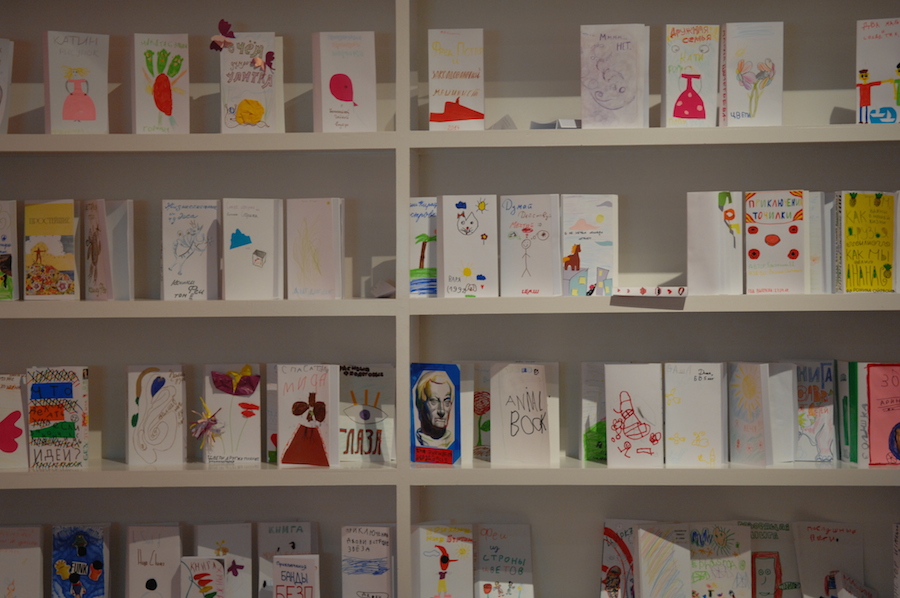
- Details
- Written by Maira Herrero
|
Contributed by: Maira Herrero, |
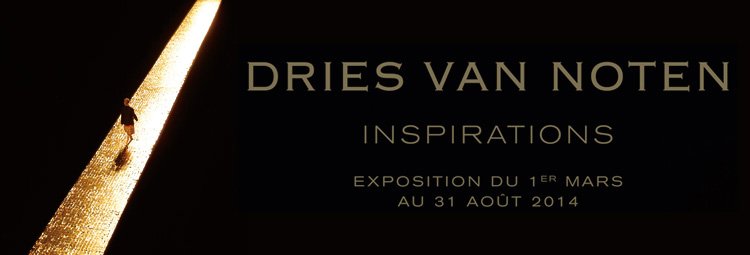
Is fashion art? “That’s the question of the century for our profession”.
That’s Dries Van Noten’s response to Pamela Golbin’s interview question. Golbin is the Head of Fashion and Fabrics at the Museum and curator of the exhibition, and the publication of the interview marks the opening of Inspirations at the Musée des Arts Décoratifs in Paris.
On display at the exhibition is the innovative body of work by Dries Van Noten: the way he treats and repurposes fabric, the richness of his embroidery and his daring and unorthodox combinations. His creative process reveals the disparate elements and influences from many different disciplines that inspired him in the creation of some truly timeless pieces. We never perceive direct associations between the source of inspiration and the end result, though — this is subtle inspiration, in the form of gestures, scents, colours, songs, paintings...
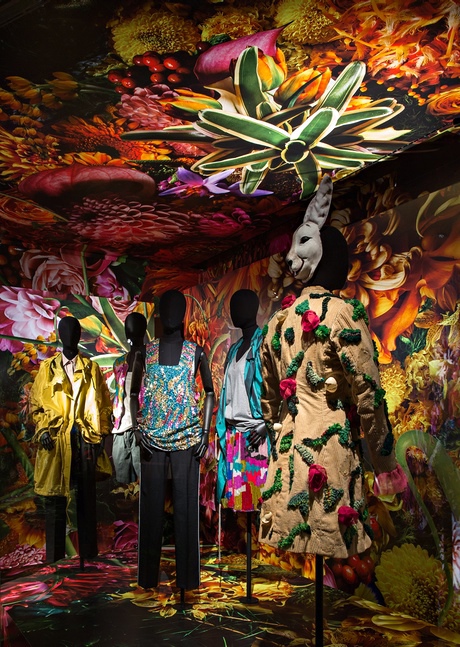
His idea of design has nothing to do with current trends — rather, he allows himself to be influenced by what the world around him as to offer, be it folkloric traditions from afar, or a certain film such as Jane Campion’s The Piano, Balenciaga’s wonderful costumes, or even David Bowie’s music. What we see here is a collection of everything that crossed his path and attracted his attention during the last three decades of his career.
The Belgian designer has collaborated with architect Jean-Dominique Secondi on this exhibition, the latter being responsible for the installation, the distribution of the pieces and the mise-en-scène of the many sources of inspiration, thereby attempting to define the role that fashion plays in culture. “Everything that I like is here, everything that has given me ideas, everything that forms the basis of each of my collections”. The installation itself is simply another part of his creative work.
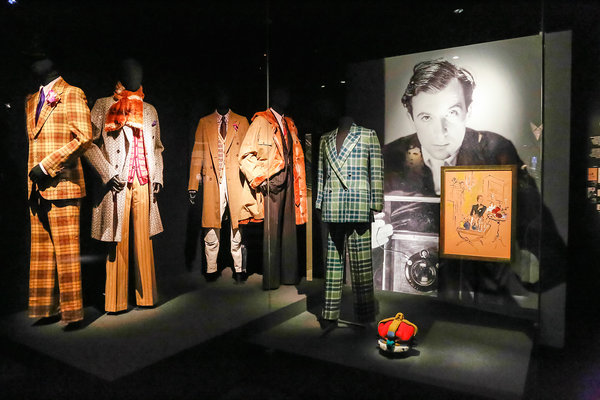
The mise-en-scène here is a real treat for lovers of visual spectacle. The space is filled with darkness punctuated by dramatic lighting — not only can we admire Van Noten’s designs but also all those images that have inspired him through the years — paintings, designs by other great fashion artists, photographs, film clips and of course the floral prints that have become a staple of his creative output.
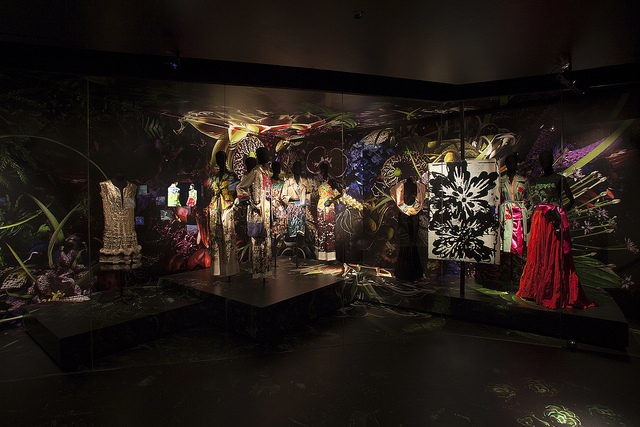
“This is the result of great team-work and is, in fact, an exercise in pure style” — Van Noten’s larger-than-life personality and innovative spirit are clearly on show here, in the Indian embroidery, the impossible dyes, the Italian and French printed fabrics, the patchwork montages and the sense of extravagance present in each beautifully—crafted piece.
Through this exhibition I think Van Noten is able to give an answer to the question of what value does fashion hold within the larger world of culture in the modern world, by revealing the intense creative process that exists behind each and every piece on display. Fashion is in fact a language, representing the designer, the consumer, the environment — it represents culture as a whole.
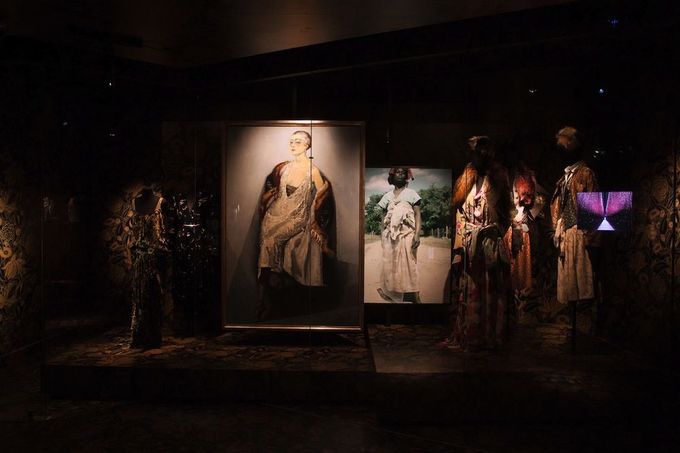
Dries Van Noten, born in Antwerp in 1958, graduated from his hometown’s Royal Academy of Fine Arts and presented his first collection in London in 1986 as part of the Antwerp Six group. He has being working tirelessly since then.
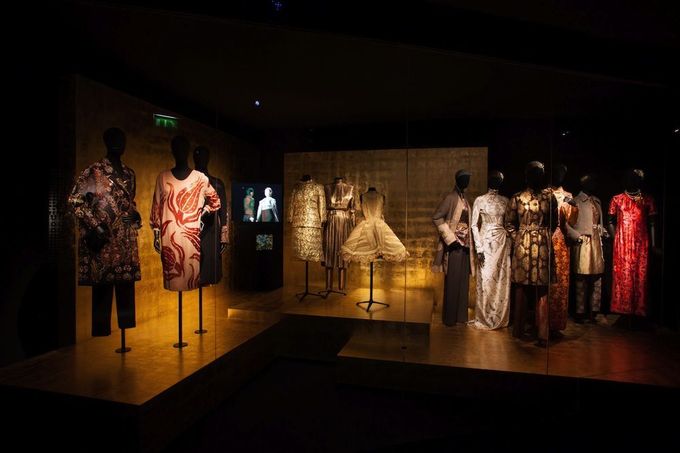
Until August 31, 2014 at the Musée des Arts Décoratifs, Paris
http://www.lesartsdecoratifs.fr/
http://i-d.vice.com/en_gb/watch/episode/1952/dries-van-noten-inspirations
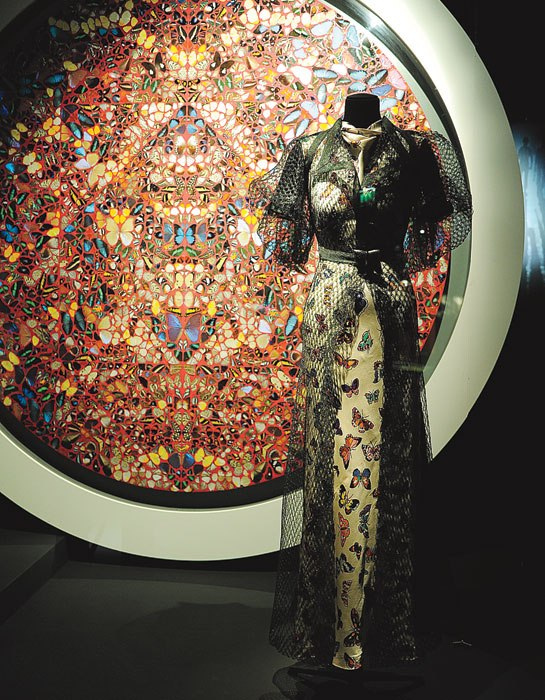
- Details
- Written by Maira Herrero
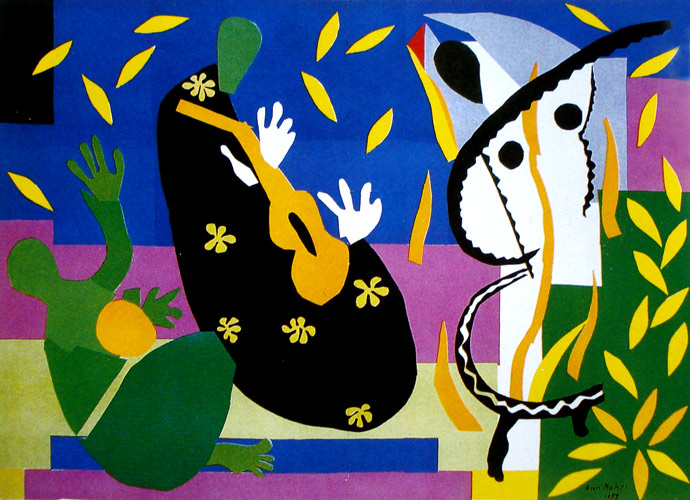
London’s Tate Modern is currently dedicating 14 rooms to the most idiosyncratic works of one of the 20th century’s French geniuses, Henri Matisse — his famous paper cut-outs.
In 1941 his health suffered a great blow and he became wheelchair-bound, but this did not stop his great creative spirit from expressing itself. He focused his creativity on a new language which he called, “painting with scissors” — he didn’t see this as stopping painting, rather a continuation of his creativity and art.
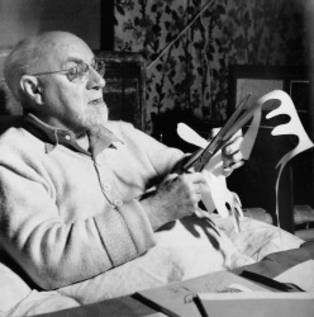
This new visual language consisted of pieces of cut-out paper painted in bright colours, at a time when Europe was being overshadowed by the Second World War. His assistants, led by Lydia Delectorskaya, would paint sheets of paper with brightly coloured gouache and, following the artist’s orders, would hang them on the walls of his studio and bedroom.
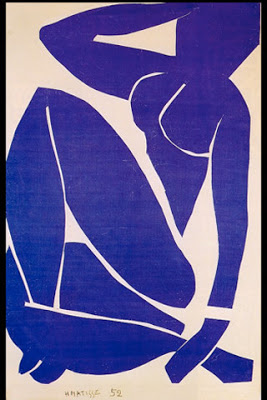

Matisse spent long hours reflecting on the different possible combinations before setting out with the scissors. He executed numerous sketches and studied different points of view before deciding on a final composition for his collages.
The exhibition includes a number of films that help us get closer to Matisse’s creative process. We see how, with strong, sure hands, he cuts away at the paper to create improvised shapes, impossible to define, and how he indicates to Lydia Delectoskaya where they should be placed.
In the cut-outs themselves we can recognize the images that have always been a constant in his art: dynamic dancing scenes (Shostakovich’s Symphony No. 1), seascapes full of fish, corals and leaves (representing his memories of his travels to Tahiti), the blue nudes series, the Moorish mosaics…
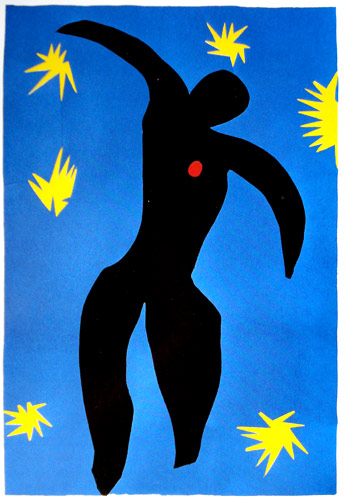
The Jazz Book is one of the key pieces of the exhibition, containing 20 sheets of cut-out paper with circus motifs and texts written by Matisse himself. The book is considered one of his most innovative works.
In 1947 he decorated the Rosary chapel in Vence, the work which perhaps more than any other describes his simplifying tendency towards flatter forms. Matisse placed great emphasis in this work, which took him over four years of labour across many different aspects of the church: the composition of the building’s windows, the design of the priest’s liturgical robes, the walls’ murals, the design and structure of the altar, etc. The artist was very pleased with his output, and was known to have called it “the result of all my active life”.
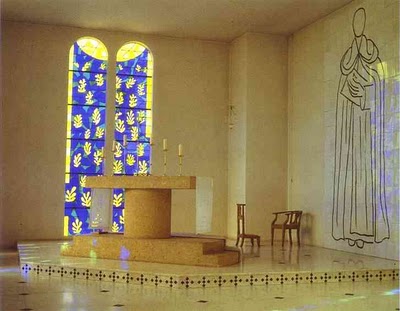
The last rooms of the exhibition are dedicated to larger works, made just before his death in the beginning years of the 50s: Le Perruche et la Sirène, The Snail, Memory of Oceania and Large Decoration with Masks, all of which are in fact displayed together for the first time in London since their creation in 1953.
The exhibition manages to transmit to the visitor all the vitality of the artist and his work — as Benjamin would say, the aura is present here.
Congratulations to Nicholas Serota, director of the Tate Modern, and to all his team!
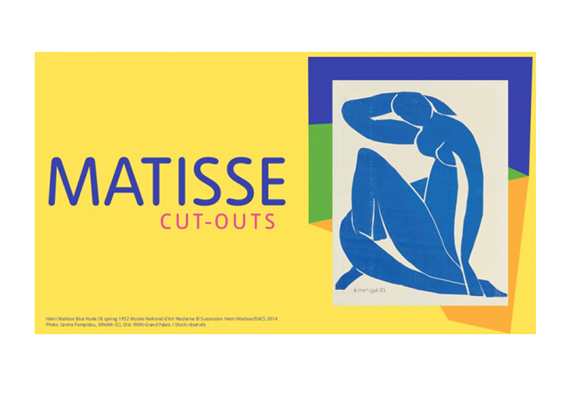
Henri Matisse. The cut-outs. Tate Modern, Londres. Until September 7, 2014.


